The Suunto 7 launched back in 2020 and represent a significant shift in the company strategy, adopting Wear OS rather than their existing software, which has very limited functionality outside of fitness.
Using Wear OS, Suunto has been able to catch up and surpass rivals Garmin in terms of smartwatch features. All this comes at a cost, the fitness tracking features are diminished and Wear OS devices have famously poor battery lives.
More recently, Suunto updated the watch to include a new Titanium version, and they have rolled out turn by turn navigation across several devices via Komoot.
Suunto 7 Titanium – What is different vs the existing Suunto
Not much has changed with the new titanium model, you get all the same functionality and the same internals.
The Suunto 7 Titanium features a robust titanium bezel and an ultra-soft microfiber textile strap that flexes perfectly around your wrist for a comfortable, breathable, and secure fit. Grade 5 titanium provides lighter weight and supreme comfort. Titanium is hard, scratch-resistant and hypoallergenic, the best choice for your skin.
Unlike the premium material Garmin and Huawei watches, which use sapphire glass, the glass of the Suunto 7 remains the same Gorilla glass found on the older model.
The shift to titanium drops the weight of the watch down from 70g to 51.9g, which makes it about the same weight as the recently launch Suunto 9 Peak Titanium. I have never been bothered about the weight of a watch, but some runners prefer something as light as possible.
Specification & Features
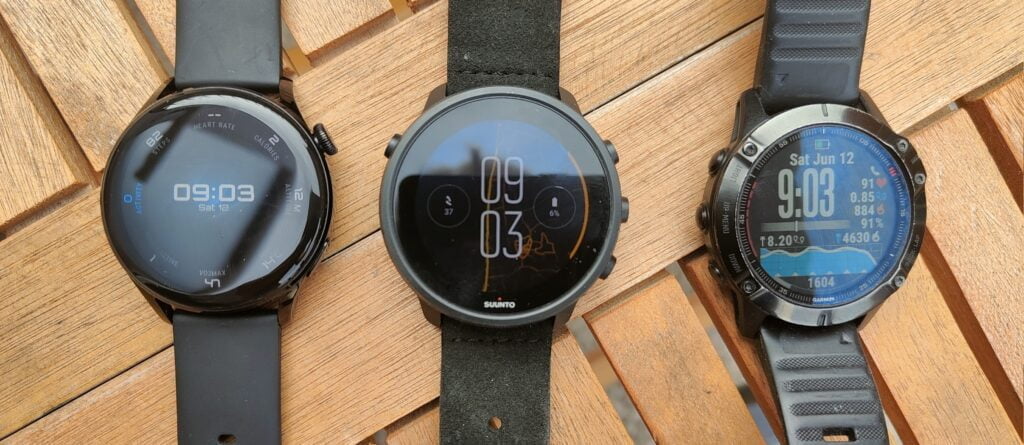
- 1.39-inch AMOLED display 454 x 454 pixels, 1,000 nits
- 50mm case
- 24mm quick-release straps
- 51.9g
- 5ATM water and dust resistance
- Glass fibre reinforced polyamide casing
- Titanium bezel
- Snapdragon Wear 3100 SoC
- 1GB of RAM
- 4.5GB of user-accessible storage
- NFC
- Wi-Fi only (no LTE)
- Runs Wear OS
As for features:
- Track exercise accurately with easy one-button access to 70+ sports modes, GPS and wrist heart rate sensor.
- Connect to popular services like Strava, Endomondo and TrainingPeaks, or share your training on the Suunto app.
- Find your own paths with free offline outdoor maps or follow the most popular routes with built-in heatmaps.
- Health tracking including sleep, steps, body resources, all-day heart rate, etc
- Contactless payments
- All the extensive range of apps and customisations available to Wear OS devices via the Play Store
Wear OS
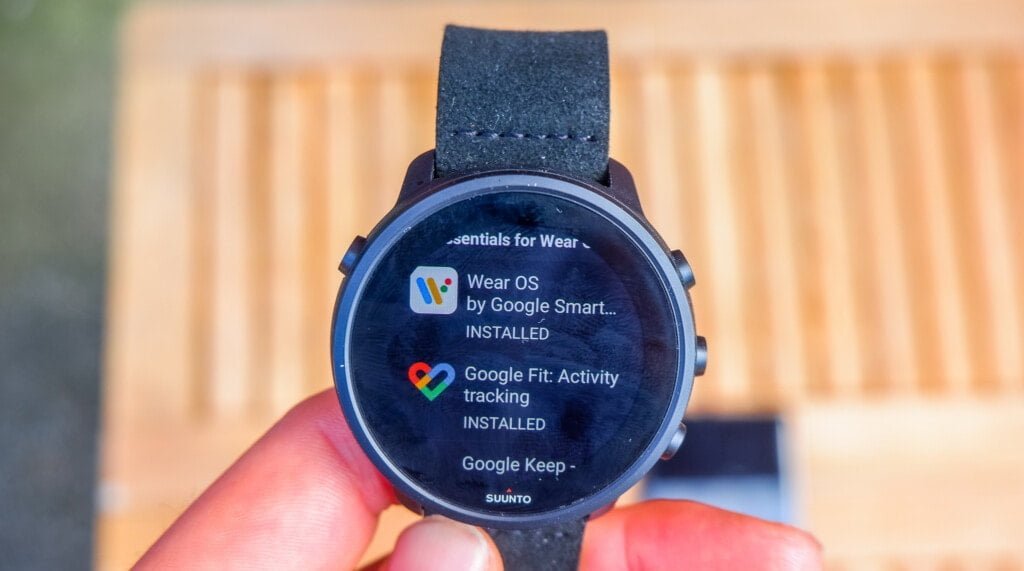
Wear OS is the main reason to buy this watch, and, as a geek, I do love it. There is a vast range of functionality and customisation you just don’t get with multisport watches.
With the Play Store on your watch, you have a wide range of apps available. One handy feature is that it will identify compatible apps you already have on your phone.
So, for me, this includes:
- ViewRanger
- Google Maps
- Messages
- Google Keep
- Spotify
- Strava
- Telegram
There is a wide range of other apps on the play store, many of which are junk, but lots of useful ones. I noticed the Nuki smart lock app is on there, allowing you to unlock your door with your watch.
One minor niggle I had is the fact you end up with three separate app compared to one from other platforms such as Garmin, Huawei or even Suunto’s other watches. You have the Wear OS app, which controls some of the settings on your watch. Google Fit for your daily health tracking functionality. Then the Suunto app itself for sports tracking. This will obviously be an issue across Wear OS devices, so not a criticism of the Suunto 7 itself.
Sports Tracking / Fitness
One of the big reasons to buy a premium-priced multisports watch is the ability to pair up with various sensors for improved data and accuracy. However, this being a Wear OS watch, there is no native functionality for any Bluetooth power meters, heart rate straps or other sensors. It is possible to use 3rd party apps to enable this (SportyGo seems to get recommended a lot) but using the Suunto sports app, I had to rely on wrist-based HR and no power meters.
Maps & GPS accuracy
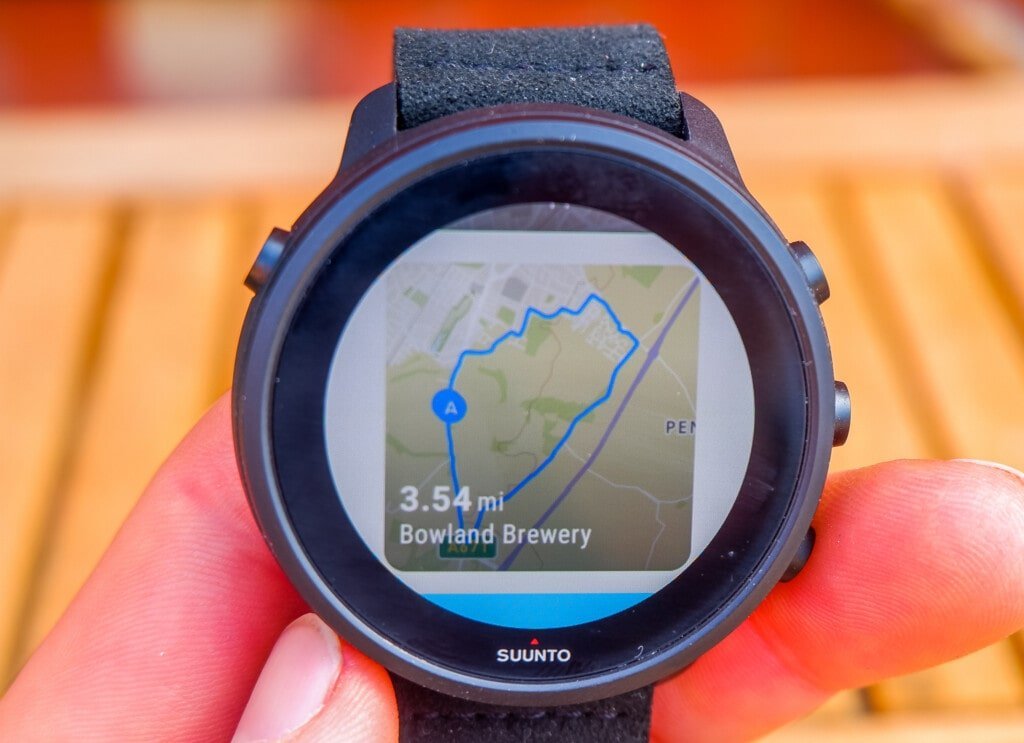
The mapping features built into the Suunto sports app are the main reason I can think of for choosing this watch over a generic Wear OS watch.
You can create routes within the Suunto App, or you can sync your routes from Komoot. Within the Suunto app, you will need to select the route and mark it to sync with your watch and enable turn by turn directions.
When you start an activity, you can select your desired route. The routing seems to work well, the higher resolution display with Wear OS offers a superior mapping solution than on my Garmin Fenix 6 Pro. It is basically like having Google Maps, but within the current activity, you are tracking.

The GPS accuracy appears to be good, the watch tracks almost perfectly with my Fenix 6 Pro and Edge 520 on my most recent bike ride. For my recent run, there were a few stray lines with the Suunto drifting off from where the Fenix and Huawei Watch 3 had plotted. However, the overall distances and speed were identical between devices, and that’s all that matters to me, personally.
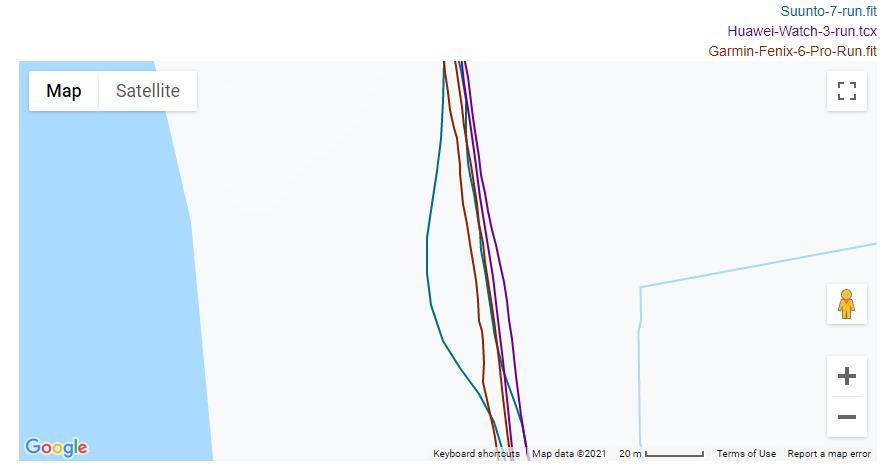
Heart Rate Accuracy
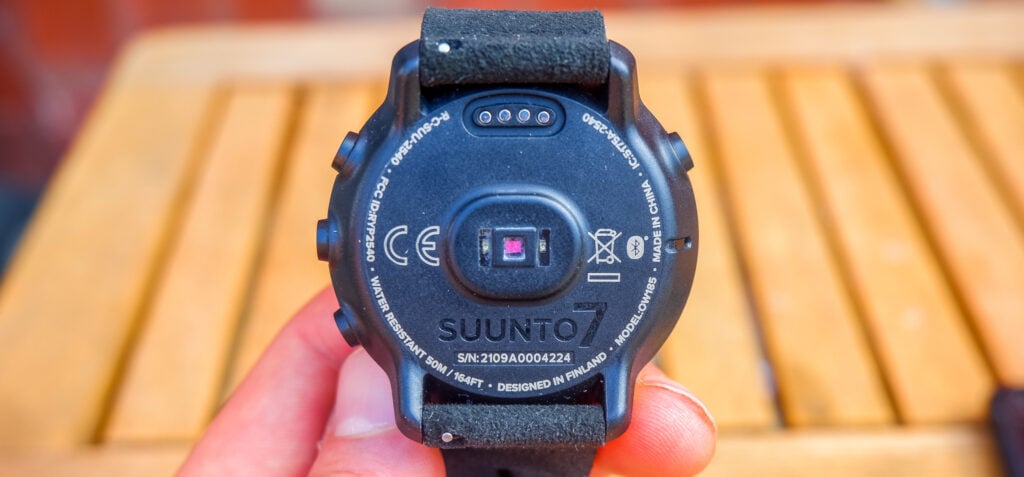
I personally hate using wrist-based heart rate for any sort of strenuous activity. It is plagued with problems. It is not specifically the hardware’s fault, just the sub-optimal placement of an HRM on your wrist. I have quite bony and hairy wrists, even with optimal placement, I find a lot of watches struggle. It is also annoying to have to remember to think about readjusting your watch whenever you want to do exercise.
The Suunto 7 did reasonably well, though. In my most recent run, it outperformed the Huawei Watch 3 by a significant margin, and it tracked well with my Garmin Fenix 6 Pro paired with the Polar Verity. There were a couple of big peaks but these were short lived and the overall average HR was about the same.

For cycling, it did OK. I guess you could say better than expected, but wrist-based heart rate tracking on a bike is notoriously poor. For large parts of my bike ride, the Suunto 7 tracked well compared to the Polar, but for a good 10 minutes an hour into the ride, things went well off track.
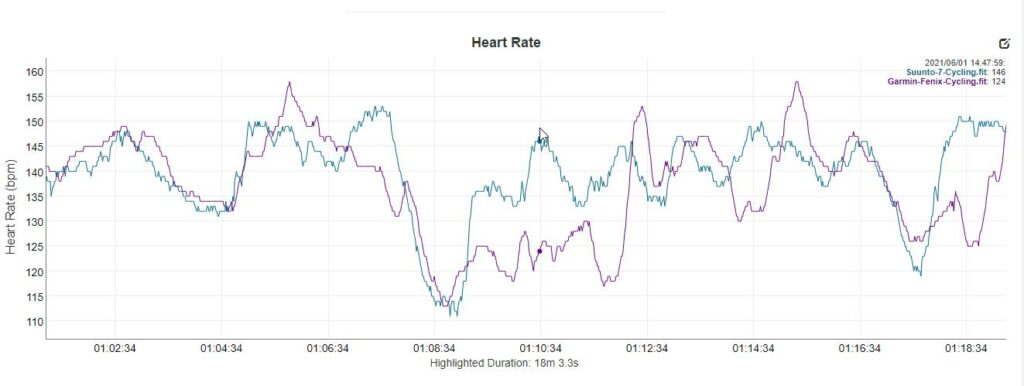
Health Tracking
Like every fitness/smartwatch, this has extensive daily health tracking features, including all-day heart rate, sleep, steps etc.
This lacks some features that many brands have started to implement, SPo2 is absent, which is a significant number of devices now. Skin temperature is also missing, as featured on the Huawei Watch 3. I am yet to be convinced of the need for these specific features, they may help with identifying illness but certainly should not be classed as reliable medical monitors.
You have to enable some of the features, such as all-day HR and sleep, which will negatively affect your battery.
Battery Life
The battery life was always going to be the main issue this watch faces. No smartwatch can compete with the more restrictive software running on multisports watches or the LiteOS based Huawei & Honor watches.
I had very low expectations, and it turned out to be slightly better than expected. I normally wake up in the morning with a decent chunk of battery left. Maybe around 10-15%, certainly not enough to make it through the day, but at least I can get a full 24 hours, including sleep tracking, then charge it up while I am sat at my desk in the morning.
Outdoor GPS battery drain was around 10%+, which is not great but enough for any activity I might use it for (assuming I remember to charge it).
Most Wear OS devices offer a similar sort of battery performance, it’s just that with the endurance sports experience Suunto has, I would have hoped for better.
Price and Alternatives
Depending on what model you want, you can get the Suunto 7 for as low as £295 directly from Sunnto (RRP £429).
The new Titanium model I reviewed is £429, making it one of the more expensive Wear OS watches on the market.
The Suunto 9 Baro is £431.20 with the new Suunto 9 Baro being £539. Then the none Baro model is £296.34. The Suunto 9 models being a similar price make for an interesting choice. The Suunto 9 is definitely the way to go if you are serious about fitness.
The Garmin Fenix 6 Pro starts at £450, then £565 for the Solar variant or around £735 for the Enduro. It is a superior sports watch but lacks the features available on Wear OS devices.
As far as Wear OS devices go, you have:
- OPPO Watch 41 mm for around £230
- Fossil Men Gen 5 for around £190
- TicWatch Pro 3 for £290 and one of the only watches running the latest Snapdragon Wear 4100 (£329.99 with LTE)
The Tizen based Samsung Galaxy Watch 3 starts at £369 for the 45mm model.
Finally, the Apple Watch SE is £269, or the Watch 6 is from £379.
So, the Suunto 7 is on the upper end of pricing for smartwatches, but they have the best sports tracking credentials out of all the Wear OS, Tizen, and Apple watch devices.
Overall
The Suunto 7 is an excellent Wear OS watch and the best I have personally reviewed. The overall build quality and looks are superior to many other Wear OS watches I have used.
The built-in Suunto app seems to be the main reason why you would want to choose this over many of the other options on the market, with the mapping functionality being its main selling point. If this is something that is important to you, then the Suunto 7 is an easy recommendation. However, beyond that, there doesn’t seem to be that much that differentiates the Suunto 7 from all the other Wear OS devices out there. If they had somehow built-in sensor support, it would be considerably more appealing for the athletes that are their core audience.
I am not convinced the £134 price premium is worth it for the titanium variant, I think I would put up with the 18g weight difference. Though, I say this about all devices that have premium-priced models with fancy build materials.
With the watch running the Snapdragon Wear 3100 SoC it is one of the best-speccced Wear OS watches on the market. Snapdragon Wear 4100 has been out for a while now, but only two watches use it, the TicWatch Pro 3 and the new Tickwatch E3. One issue here is that Wear OS-based devices tend to date a bit faster than multisports watches. The Sunnto 9 has been out since 2018, and it is still a great watch, but I am not sure I’d recommend a 3-year-old Wear OS watch.
Thankfully, it has just been revealed that the Snapdragon Wear 3100 SoC should be compatible with the new Wear OS 3.0, so there should be plenty of life left in the watch, assuming Suunto upgrades it.
Posted by Mighty Gadget Blog: UK Technology News and Reviews